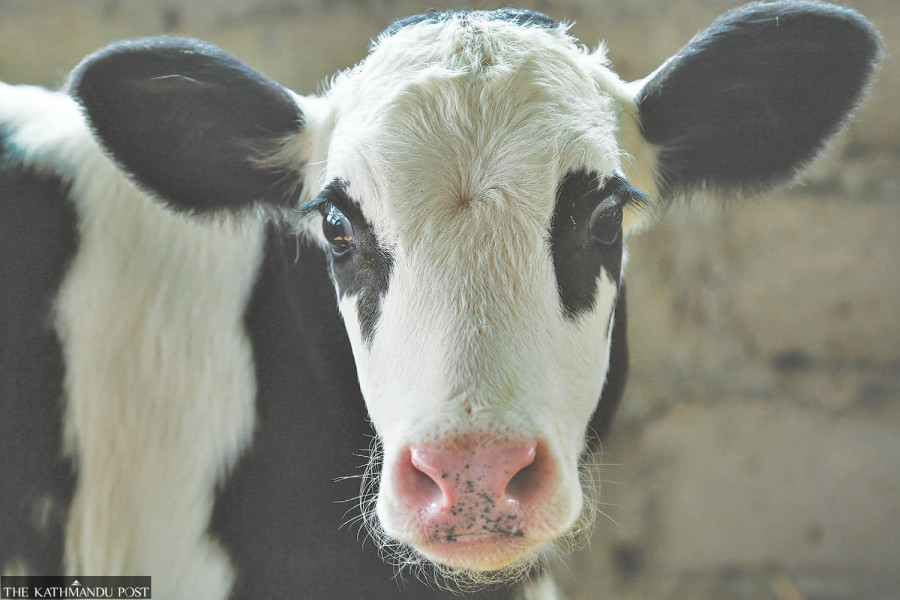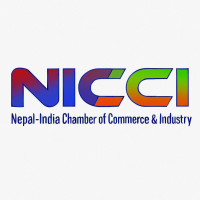Money
In Sindhuli, dairy gives farmers, especially women, a new hope
On Tuesday, Nepal and South Korea decided to establish Kamalamai Municipality as the ‘Korea-Nepal Model Dairy Village’, Korea’s first attempt to build a dairy village overseas.
Sangam Prasain
As soon as Bhola Adhikari hears his cow’s loud moo, a sign it should be milked, he sets down the bucket.
“Today [on Tuesday], it gave me 30 litres,” said Adhikari of ward 5 of Kamalamai Municipality.
On February 6, his Holstein-Friesian breed cow gave birth to a calf, Nepal’s first pure-bred Holstein. It has been named ‘Gamsa’ in Korean (‘Dhanyabaad’ in Nepali), meaning ‘thank you’.
Holsteins are large, stylish animals with colour patterns of black and white, or red and white.
“I milk the cow three times a day,” said Adhikari. “I had never imagined that I would get 30 litres of milk daily, more than three times that we get from the local breed.”
In December 2022, under an initiative of Heifer Korea, South Korean dairy farmers and donors gifted 100 purebred Holstein heifers to Nepali farmers in a gesture of cooperation and goodwill between the two nations.
The eight breeding bulls were given to the Nepal Agriculture Research Council and three National Livestock Breeding Offices.
Among the heifers, 80 were shipped to Kamalamai municipality, but five of them died from the Lumpy skin disease last year that killed more than 50,000 cattle across the country. One heifer died of Theileriosis as the medicine for its treatment was not available in Nepal.
So far, Adhikari has invested Rs175,000 in the cows in the last 13 months.
“With the current level of milk production, I expect to recover my investment in the next four months,” said Adhikari.
“Even if we get Rs67 a litre, a current farmgate price, it will give us Rs60,000 monthly income from a cow.”
Adhikari said that milk productivity is expected to increase after 22 days of calving.
Rukmuni Adhikari, a member of a women’s group, is expecting two calves this May.
Currently she raises 11 local cows and two Holstein breeds.
Rukmuni sells 80 litres of milk daily from her cow farm and is optimistic about nearly doubling the production after three months once the heifers are born.
“I expect 60 litres from two Holstein cows,” she said. “The cost to rear the high-yield breed is higher, but they also produce more milk.”
“I had never imagined getting 30 litres a day from a cow,” said Rukmani, who owns 14 kattha of land to cultivate grasses. “The highest quantity of milk we got till now is 10 litres a day.”
She is eagerly waiting for May, in anticipation of better things to happen—more yield, more income.
Currently, 73 other heifers in Kamalamai Municipality are pregnant.
Villagers say that 30 litres of milk a day would contribute around Rs5 million in monthly income, depending on the season, to the two wards of Kamalamai Municipality.
“The farm here, around 100km from the country’s capital, Kathmandu, has become a hope for many dairy farmers, especially women,” said Upendra Kumar Pokharel, mayor of Kamalamai Municipality.
Situated in the hills and Tarai landscape, a rapid transformation is taking place in Sindhuli.
It has already garnered a success story for producing sweet oranges.
The Sindhuli Road, a serpentine route that is a milestone project of Japan’s cooperation with Nepal, is another successful agriculture road linking Nepal’s capital Kathmandu, helping farmers be entrepreneurs.
Small-scale farmers are going commercial in Sindhuli.
“It is among Nepali districts with fewest of its people migrating abroad for jobs,” said Pokharel. “Now, with intensive milk production, and farmers' efforts to learn about new farming techniques and technology as dairy entrepreneurs will pay off soon.”

On Tuesday, Nepal and South Korea decided to establish Kamalamai Municipality as the ‘Korea-Nepal Model Dairy Village’, Korea’s first attempt to build a dairy village overseas.
“It’s a historic day. It’s the first case of establishment of a modern dairy village outside South Korea,” said Tae-young Park, South Korean ambassador to Nepal. “It’s a collaboration. This modern dairy village would be a symbolic celebration of the 50th anniversary of friendship between Korea and Nepal,” he said on Tuesday in Sindhuli.
“It’s just a start. We are fully ready to collaborate with Nepal.”
Korea has assured continual transfer of knowledge and resources to ensure the success of the model dairy village in Sindhuli.
“This is the first exciting step to modernise the dairy sector in a way that promotes sustainable development and prosperity for the families who are the backbone of agricultural and smallholder farmers,” said Rewati Raman Poudel, secretary at the Ministry of Agriculture and Livestock Development.
There is an ever-increasing demand for milk in Nepal due to the growth of two key drivers—urbanisation and per capita income.
Nepal’s dairy sector has a massive and growing domestic market in which milk consumption is constantly rising with the increase in people’s purchasing power, urbanisation, changing food habits and lifestyle, and demographic growth.
In Nepal, a 2020 study estimated that a Nepali consumes 72 litres of milk and dairy products annually, while the Food and Agricultural Organisation recommended requirement is 91 litres.
The Department of Livestock Services estimates the milk deficit to worsen as the four percent annual growth of dairy products is not keeping pace with the demand, which is growing at 8 percent annually.
Overall milk production is relatively low due to poor genetic potentials, poor feeding, and a poor health care system.
According to the Ministry of Agriculture and Livestock Development, Nepal produced 2.56 million tonnes of milk in fiscal 2021-22.
As Sindhuli is all set to be a dairy hub, farmers fear ‘milk holidays’ (when dairies do not purchase milk from farmers) amid a slump in the demand for dairy products—one problem Nepali farmers occasionally face.
Pokharel, mayor of Kamalamai, however, is confident that once the Model Dairy Village materialises, it will help market the products not only domestically but internationally too, to ward off milk holidays.
“We have 74 high-yielding cows and this year they will give birth to another 74 calves. In this way, we have targeted to reach 500 farmers in the next few years.”




 8.12°C Kathmandu
8.12°C Kathmandu














